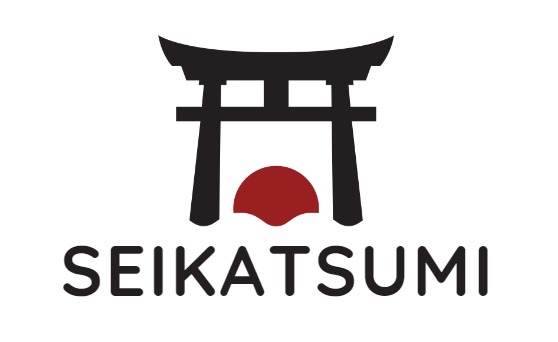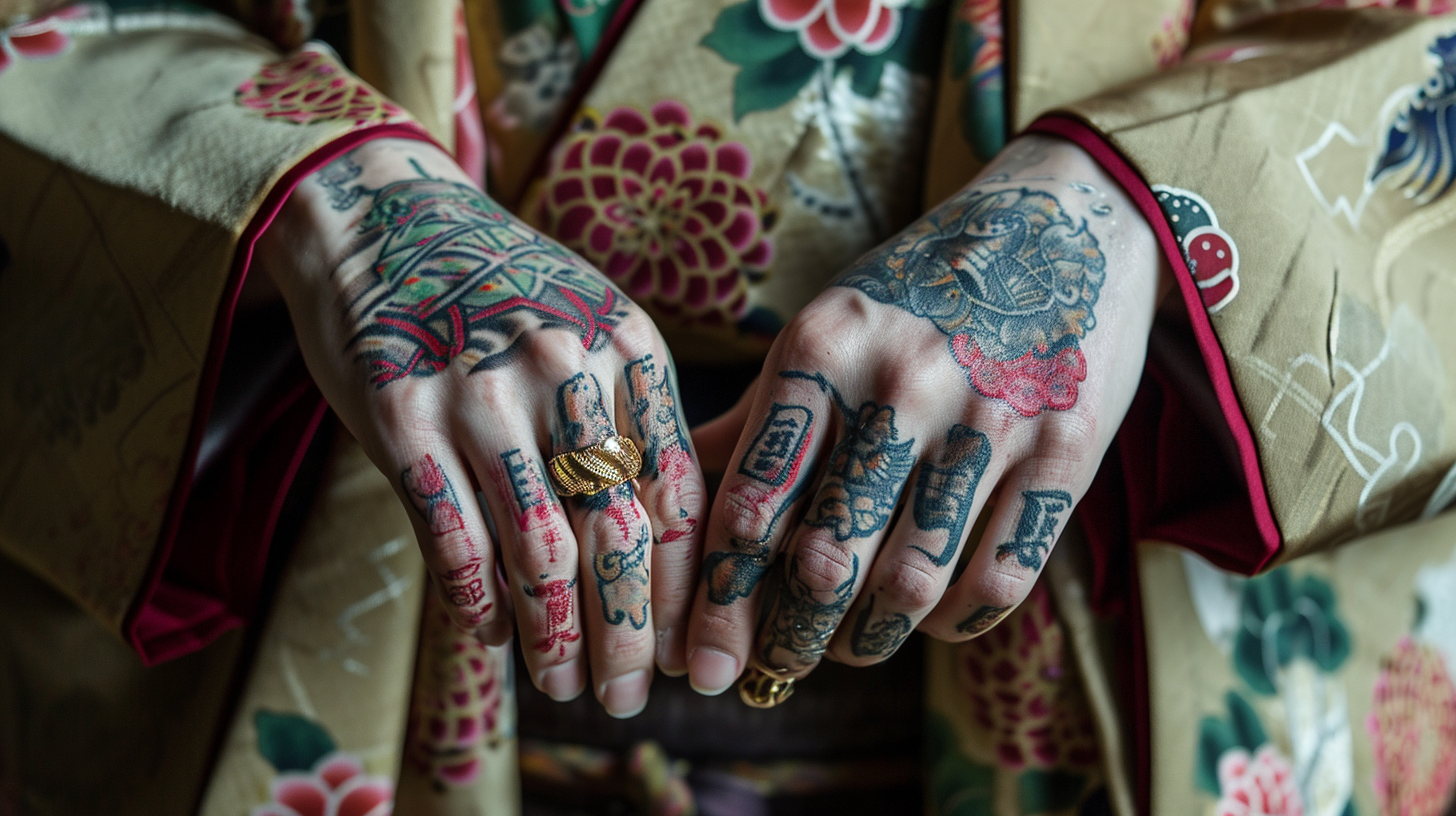Are you intrigued by the world of intricate Japanese finger tattoos? I’m right there with you!
I’ve been captivated by the depth and subtlety of these tiny yet powerful symbols inked on fingers and hands. That’s why I’ve spent countless hours exploring this unique aspect of tattoo art.
Dive into the delicate realm of Japanese finger tattoos with me. From the classic black ink designs to the occasional bursts of color, every tattoo tells a story.
So, why wait? Join me in uncovering the beauty and intrigue of Japanese finger tattoos! 🙂
History of Japanese Finger Tattoos
I am always fascinated by the rich history and cultural significance of tattoos.
One of the most interesting styles of Japanese tattoos is the finger tattoo!
Cultural Significance
In Japan, tattoos were originally used to identify criminals and were considered a mark of shame. However, over time, tattoos evolved into a form of artistic expression and are now considered an important part of Japanese culture.
Finger tattoos, in particular, are a unique and intimate way to express oneself. They are often hidden from view, making them a personal and private statement.
In addition to their personal significance, finger tattoos also have cultural significance in Japan.
For example, in Japanese culture, the pinky finger represents loyalty, while the ring finger represents commitment. These meanings can be incorporated into finger tattoo designs to convey a message or express a sentiment.
Traditional Motifs
Traditional Japanese finger tattoos often feature small, intricate designs that are rich in symbolism. Some popular motifs include dragons, koi fish, cherry blossoms, and waves.
These designs are often inspired by Japanese folklore and mythology and are meant to convey a sense of strength, courage, and resilience.
Another popular motif for finger tattoos is the kanji symbol. Kanji is a form of Japanese writing that uses characters to represent words and ideas.
Finger tattoos featuring kanji symbols are often used to express a personal philosophy or belief.
Whether you choose a traditional motif or a personal symbol, a finger tattoo is a meaningful way to express yourself and honor the traditions of Japanese tattooing.
Designs and Meanings

If you’re considering a Japanese finger tattoo, it’s essential to understand the designs and meanings behind them. Japanese tattoos are known for their intricate designs and bold colors, and finger tattoos are no exception.
They are often small and simple in design, but they can still convey a powerful message.
Popular Symbols
Japanese finger tattoos often feature popular symbols that hold significant meaning in Japanese culture. For example, the cherry blossom symbolizes beauty, the dragon represents strength and power, and the koi fish symbolizes perseverance and determination.
Other popular symbols include the lotus flower, which represents purity and enlightenment, and the phoenix, which represents rebirth and renewal.
Color Symbolism

Color plays an important role in Japanese finger tattoos, and each color has its own symbolism. Black represents strength and power, while red symbolizes passion and energy.
Blue is associated with calmness and tranquility, and green represents growth and harmony. Yellow is often used to symbolize wealth and good luck, while white represents purity and innocence.
When it comes to Japanese finger tattoos, the possibilities are endless. Whether you choose a simple symbol or a more intricate design, each tattoo holds its own unique meaning.
It’s important to do your research and choose a design that speaks to you and represents your values and beliefs.
Hey you! Are you interested in more tattoo trends? Then be sure to check out our top tattoo articles! You definitely can’t miss it!
Japanese Skull & Oni Mask Tattoos: 100+ Ideas You’ll Love 2024
The Best Japanese Half Sleeve Tattoos 2024: 25+ Be the next Trendsetter!
60+ Japanese Anime Tattoos: Expert Tips for Timeless Ink Mastery 2024
Tattooing Process
The process of getting a tattoo on your finger is unique and requires special attention.
Techniques
Tattooing on fingers can be challenging because the skin is thin and the area is bony. The most common technique used for finger tattoos is the stick and poke method.
This technique involves using a needle to poke the ink into the skin, creating the design. The stick and poke method is a traditional technique that has been used for centuries in Japan. It is a slow and meticulous process that requires patience and precision.
Another technique used for finger tattoos is the machine method. This technique involves using a tattoo machine to inject the ink into the skin.
The machine method is faster than the stick and poke method and can create more intricate designs. However, it can be more painful and may require more aftercare.
Aftercare
After getting a finger tattoo, it is important to take care of the area to ensure proper healing. Here are some tips for aftercare:
- Keep the area clean: Wash the tattoo gently with mild soap and warm water, pat it dry, and avoid rubbing or scrubbing the area.
- Moisturize regularly: Keeping your tattoo moisturized is also essential for its preservation. Use a fragrance-free lotion or ointment to prevent dryness and peeling.
- Avoid water: Avoid submerging the tattoo in water for at least two weeks after getting the tattoo. This includes swimming, soaking, and hot tubs.
- Avoid tight clothing: Wear loose clothing that won’t rub against the tattoo.
By following these aftercare tips, you can ensure that your finger tattoo heals properly and looks great for years to come.
Placement Ideas

If you’re considering getting a Japanese finger tattoo, there are a few things to keep in mind when it comes to placement.
Here are some ideas for where to put your new ink:
Thumb Tattoos
Thumb tattoos are a popular choice for Japanese designs. They’re easy to show off and can be a great way to express your individuality. Some common thumb tattoo designs include kanji characters, cherry blossoms, and dragons.
Index Finger Tattoos
The index finger is another popular spot for Japanese finger tattoos. This is a great spot for smaller designs, such as a single kanji character or a small cherry blossom.
Keep in mind that index finger tattoos can be more visible than other finger tattoos, so make sure you’re comfortable with that before you get inked.
Other Fingers
While the thumb and index finger are the most popular spots for Japanese finger tattoos, there are plenty of other options as well. The middle finger, for example, can be a great spot for a larger design, such as a dragon or a koi fish.
The ring finger is also a popular spot for tattoos, especially for couples who want to get matching designs.
When it comes to Japanese finger tattoos, the possibilities are endless. Just remember to choose a design and placement that you’ll be happy with for years to come.
Modern Adaptations and Trends
Japanese tattoos have been around for centuries, and they have evolved over time to include new designs and techniques.
Finger tattoos, in particular, have become increasingly popular in recent years, especially among younger generations.
One of the modern adaptations of Japanese finger tattoos is the use of minimalist designs. Instead of large, intricate tattoos, many people are opting for small, simple designs that are easy to conceal.
These designs often feature traditional Japanese symbols such as the cherry blossom, dragon, or koi fish. They are usually done in black ink, which adds to their simplicity and elegance.
Another trend in Japanese finger tattoos is the use of color. While traditional Japanese tattoos are usually done in black and gray, many people are now adding pops of color to their finger tattoos.
This trend is particularly popular among women, who often choose bright colors like pink, purple, and blue.
In addition to minimalist designs and color, another trend in Japanese finger tattoos is the use of text. Many people are now getting Japanese words or phrases tattooed on their fingers.
These tattoos often have deep meanings, and they can be a great way to express oneself.
My personal favorite Tattoo motif!
In my opinion, having small, delicate black and white dragon designs tattooed on the index finger is both elegant and aesthetically pleasing.
The monochrome palette emphasizes the intricate details of the dragon, a symbol rich in meaning and mythology.
It’s a subtle yet powerful form of self-expression, blending the allure of ancient symbolism with a modern, minimalist style. This tattoo perfectly balances the boldness of a dragon motif with the understated placement on the finger, making it a unique and captivating choice.
Frequently Asked Questions
What are Japanese finger tattoos?
Small, symbolic tattoos inked on fingers or hands, often with cultural significance.
Do they have specific meanings?
Yes, each design can represent various meanings, from traditional Japanese symbols to personal expressions.
Are colors used in Japanese finger tattoos?
Primarily black ink, but some may incorporate color for added meaning.
If you liked this blog article about japanese finger tattoos, don’t forget to follow us on Pinterest so you don’t miss any more tattoo tips.
Let us know, which of the above ist your favorite finger tattoo motif!



















Thank you for breaking down such a complex topic into understandable segments. It was very helpful!
You’ve presented some compelling points here. This article definitely made me think differently about the subject.